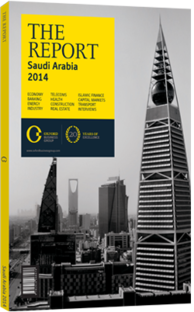Moving the masses: The new metro is set to transform the city’s public transport
January 2014 marked a major step forward for the Makkah Metro project with the passing of the pre-qualification deadline for potential bidders for phase-1 tenders, meaning much-needed additional mass transport capacity around the Grand Mosque and the wider city is that much closer to becoming a reality. “15 national and multinational consortia have submitted their eligibility documents to be qualified for bidding for the civil works of the Phase 1 of the Makkah Metro project,” Osama Al Bar, mayor of Makkah and chairman of the executive committee of the city’s public transport system, told local media at the time.
Not to be confused with the already operational Al Mashaer Al Muqaddassah light railway, the new mass transit system in Makkah will eventually consist of four lines with a total length of 114 km and 62 stations in addition to a wide network of buses linking all districts with important areas. Feasibility studies have suggested that, subject to demand, this may be extended further to a final configuration of 182 km and 88 stations – although this is yet to be confirmed.
MANAGEMENT & CONSTRUCTION: The planning, development, operation and management of the network is being supervised by the Makkah Mass Metro Rail Transit Company (MMRTC), a subsidiary of Al Balad Al Ameen, the investment arm of the Makkah Municipality. The MMRTC is fully owned by the municipality but it has the authority to engage private companies to realise the aims of those parts of the development strategy over which it has responsibility – in this case, the new metro system.
As of spring 2014 the MMRTC was focusing on construction of phase 1, which will entail two of the four metro lines with a total length of around 45 km and 22 stations. Of this, 12 km and seven stations will be underground and 33 km and 15 stations overland. One line will run between the Medina Road, north of Taneem Mosque and Umm Al Qura University in Abidiya. The other will run from the Jamrat region in Mina west via the northern side of the Grand Mosque, King Abdulaziz Road and the Haramain High-Speed Rail station in Rusaifa to the Makkah-Jeddah Expressway. The exact location of the stations remains a closely guarded secret due to concerns regarding land speculation in these areas. Phase 1 is due for completion in four years, with metro lines beginning operation in 2019 and buses in 2017, according to the MMRTC.
Tenders for construction of phase 1 have been split into four design/build packages. The first two of these, the civil works packages, for which pre-qualifications submissions have already been made, have been split into two, with one subcontract for the underground part of the system and another for the elevated sections. In April 2014 10 consortia were shortlisted for contracts to build the two metro lines, according to press reports. The shortlist included both domestic and international contractors, with the final contracts expected to be awarded by the fourth quarter of 2014.
VARIOUS PACKAGES: While this model for packaging the various construction tenders will undoubtedly achieve better value for the municipality, it could also give rise to a number of complications. In particular, managing the integration and transition processes between the various packages that make up each phase could prove difficult for a company with limited experience. The Al Haramain High-Speed Rail project, which was packaged and tendered in a similar way, has experienced some of the same issues, resulting in delays to the final completion date. Another example from Saudi Arabia, the Riyadh Metro, has been able to avoid such delays and complications by tendering the project as one entire package that the main contractor consortium then sub-contracts out. This of course incurs a higher relative cost, but has helped the project adhere to strict deadlines.
The challenges faced by the Makkah Metro project are by no means insurmountable, although they could cause some delays in the short term. In the long term, however, such infrastructure developments will prove hugely beneficial for both the city and its residents.
You have reached the limit of premium articles you can view for free.
Choose from the options below to purchase print or digital editions of our Reports. You can also purchase a website subscription giving you unlimited access to all of our Reports online for 12 months.
If you have already purchased this Report or have a website subscription, please login to continue.

